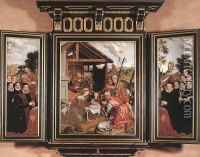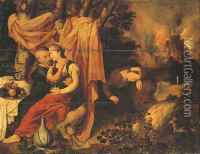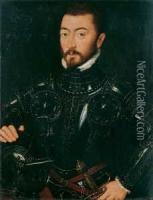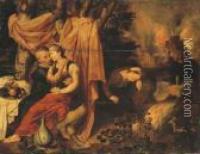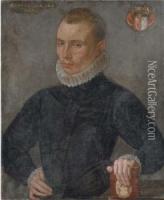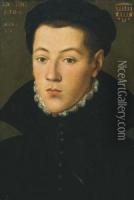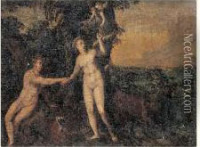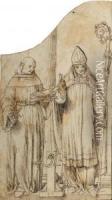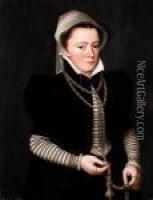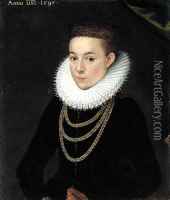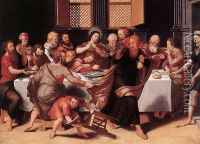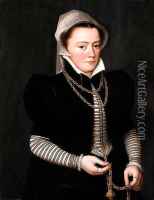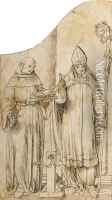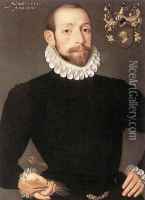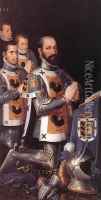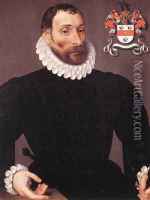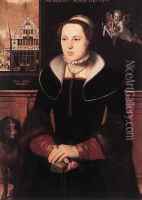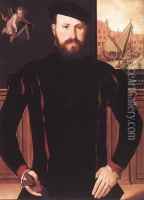Pieter Pourbus Paintings
Pieter Pourbus was a Dutch Renaissance painter, sculptor, and cartographer who was born in 1524 in Gouda, in the Dutch Republic (present-day Netherlands). He is primarily known for his work in the city of Bruges, in present-day Belgium, where he moved early in his life and where he would establish himself as a prominent figure in the artistic community of the time. Pourbus is noted for his meticulous style and his attention to detail in portraiture and religious compositions.
Pourbus started his artistic training in his hometown of Gouda but moved to Bruges in the 1540s, where he became a master in the Guild of Saint Luke by 1544. His move to Bruges was pivotal in his development as an artist, as he was exposed to the works of the Flemish Primitives and the early Northern Renaissance artists, which greatly influenced his style.
He married the daughter of the painter Lancelot Blondeel, which further integrated him into the circle of prominent artists. Pourbus's work was characterized by a blend of the late Gothic tradition with the emerging Renaissance style, a transition that can be seen in his portraits that combine a high level of detail with an effort to depict the sitters in a realistic manner.
Aside from portraits, Pieter Pourbus also painted altarpieces and religious scenes, which were in demand by churches and religious institutions. His compositions often included complex iconography and a deep understanding of Catholic symbolism, which was appreciated by his contemporaries.
Pourbus was also a skilled cartographer, and in 1561, he completed a detailed map of Bruges, which is considered an important historical document today. His map provided a valuable insight into the urban landscape of the city during the 16th century.
Pieter Pourbus continued to work and live in Bruges until his death in 1584. His legacy was carried on by his son, Frans Pourbus the Elder, and his grandson, Frans Pourbus the Younger, both of whom became renowned painters in their own right. Pieter Pourbus's work is now held in various museums, and he is remembered as a master of Northern Renaissance art, with a lasting impact on the artistic heritage of the Low Countries.
